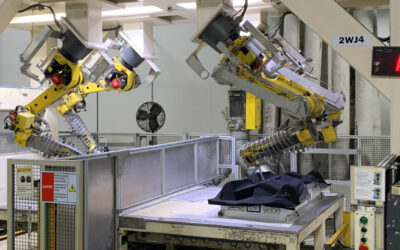The Mining Innovation Commercialization Accelerator, also known as MICA, is an ongoing initiative in the Canadian mining industry to develop innovative technology. MICA was started by the Centre for Excellence in Mining Innovation (CEMI). This not-for-profit Canadian mining industry research group has been working on advances in mining over the past fifteen years to address challenges and solve problems within the industry.
During that time, a number of innovations and technology solutions were developed, but this was nonetheless a hard time for the sector, and many solutions faced difficulty being adopted and integrated into mining. Vice President of Business Development and Commercialization Charles Nyabeze feels that there are commercialization service gaps faced by these technologies, as they are translated from a service into a commodity or product of use to the industry. These gaps vary but they have challenges in common, such as a lack of access to capital or a support network that can move the innovation forward.
As Nyabeze says, “It takes an ecosystem to raise up an innovation,” so MICA was created to support such an ecosystem and help close solutions gaps. In its earlier days, the initiative made a case with the government of Canada that, through its investment in MICA, the mining innovation ecosystem could be utilized to create a national network of innovators collaborating to move innovations forward in a meaningful way. This relates to its goal to mobilize Canadian-made technologies, so they can be integrated into mining operations on a local, national, and global level, thereby creating more marketing opportunities for Canadian solutions.
Since last year, MICA has successfully secured six cross-country partners, all of which have been carrying out various network development activities in their areas and working to recruit more members into MICA. These six partners include the Bradshaw Research Initiative for Minerals and Mining in British Columbia, InnoTech Alberta, Saskatchewan Polytechnic, MaRS Discovery District in Ontario, Groupe MISA in Quebec, and College of the North Atlantic in Newfoundland.
MICA now sports close to one hundred members spread across various mining companies, educational institutions, and individual members. It has also gained about one hundred and six technology projects, and eighty-one applications have been submitted for the project application process. The initiative is also engaging in various market activities, including international opportunities, and creating pathways for emerging solutions in Canada to reach the global market.
Nyabeze cites conferences like Digitalization in Mining North America as one of many that MICA has been active in. It also has its own road shows, where Nyabeze and others speak to mining networks about innovation. “We need to get the word out about MICA and continue to raise its profile in the mining industry.”
In informal surveys, MICA has found four distinct areas that are the most important for mining companies and will continue to be areas of focus for the initiative moving forward. The first has to do with the environment which, Nyabeze notes, is inherently affected by mining. There are long-term liabilities associated with mining, so MICA is investing in technology—such as technology for water management and tailing systems—that will help to manage environmental impact.
This environmental focus also includes a social aspect, and MICA works to give mining a good reputation as to how it interacts with the environment. As mining will continue to be under government scrutiny in future, factors like air pollution, soil contamination, and water difficulties will also be important to address.
The second focus area is productivity since efficiency is critical in any mining operation. The type of automation that is used today is especially effective, so MICA wants to constantly increase efficiency to avoid downtime on projects. There is currently a big push to increase mining productivity globally, according to Nyabeze, and this goes along with the introduction of new technology into the market.
Safety is also an issue related to productivity, due to the moving parts in a typical operation, especially with another growing global demand for mining to produce more minerals and metals at a lower cost and in a cleaner fashion. While the current supply chain is ably meeting demand, future demand will no doubt be trickier, an eventuality for which MICA continues to prepare.
Nyabeze, and others in the industry, are looking forward to new technology related to energy—the third focus area—that will allow companies to be less grid-dependent, and one such technology might be small modular nuclear reactors. There is also a movement in mining circles to lessen energy footprints at the same time as applying alternate energy sources to power technology like vehicles and equipment.
“You need the biggest bang for your buck when you blast,” Nyabeze observes, so any new energy source must prove itself before it can hope for widespread use.
The fourth area has to do with smart digital technology. Digitalization is catching on in mining, and the switch away from analog is important, as is the integration of machine learning and artificial intelligence into decision support systems. These technologies will allow mining to be smarter and more responsive.
The call for a greater autonomous technology presence is also creating a desire for necessary communication infrastructure, and communications company Rogers is bringing its 5G network into the mining industry. “Riding the digital wave,” as Nyabeze calls it, will allow mining to take its operational efficiency to the next level.
The biggest block to MICA’s current goals is the availability of capital that can be put into emerging and mature Canadian solutions. Nyabeze notes that the initiative has identified $120 million as its funding need but is only able to allocate around $11.8 million. “The demand for capital is bigger than the supplies we have for it.” Nyabeze believes that Canada is risking leaving amazing technologies on the table that may find a home elsewhere, so capital is necessary to avoid this.
Furthermore, with companies acquiring market innovations, the regulatory environment in which mining operates requires these companies to use proven technologies. This, unfortunately, puts emerging solutions on the back burner. Nyabeze also feels that the connectivity between Canada’s innovation ecosystem and the mining industry is weak, a problem that MICA is working to address so that leading technology is not left out.
The mining sector is going both remote and deep in the future, so it will need the solutions put forth by MICA to be able to handle any difficulties related to this path. By the beginning of 2023, MICA will have made known the projects it will be funding, as well as its next call for proposals. Into 2023, it will be moving with the momentum of its approved projects and getting more ideas into the market for its next call, which will be the allocation of around $18.2 million.
Nyabeze expects that more people will get on board with MICA in the next year and into the future, as the initiative will be looking to increase global mining company knowledge and participation. It will be opening to international membership eventually and is working to build a strong national network of innovators.
“2023, for us, will be a year where we mobilize the innovation ecosystem across the country in a way that has never been done before to assist and grow the mining industry,” Nyabeze asserts.













